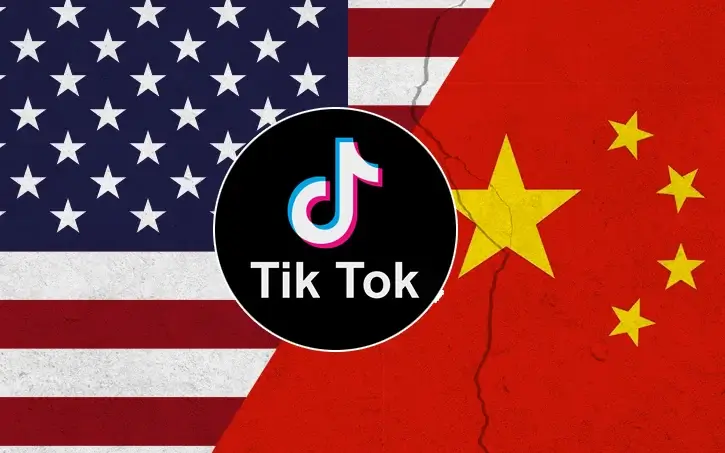The Future of Short-Form Video: How a TikTok Ban Could Reshape the Digital Marketing Landscape
The potential TikTok ban in the United States has sparked a pivotal conversation about the future of short-form video and its significant role in the digital marketing landscape. As one of the leading platforms, TikTok’s removal could lead to dramatic shifts in how users and creators engage with content, potentially altering digital marketing strategies across various industries. This development presents both challenges and opportunities, as businesses may need to adapt to user behaviour changes and explore TikTok alternative platforms to maintain their engagement. As trusted advisors in the realm of digital marketing, we will delve into the implications of the TikTok ban, highlighting its impact on the creator economy and emerging social media trends, while offering AI-driven solutions to help businesses navigate this evolving landscape with confidence and assurance.
Impact of a TikTok Ban
Changes in User Behaviour
The potential TikTok ban could lead to significant shifts in user behaviour, as millions of users seek out new platforms to fill the void. With TikTok being a major player in the short-form video space, users may turn to TikTok alternative platforms like Instagram Reels or YouTube Shorts. This migration can impact how content is consumed and shared, leading businesses to reassess their digital marketing strategies.
Moreover, the ban could influence the types of content that gain popularity. As user behavior changes, trends might shift towards more diverse or niche content that resonates with new audiences on different platforms. For marketers, understanding these changes is crucial for optimizing content strategies and maintaining engagement. By leveraging AI-driven insights, businesses can adapt to these changes effectively, ensuring they remain connected to evolving consumer preferences.
Shifts in Digital Marketing Strategies
A TikTok ban could catalyse a major transformation in digital marketing strategies. Without TikTok, marketers must pivot to TikTok alternative platforms, adjusting their approaches to maximise reach and engagement. This shift necessitates a keen understanding of each platform’s unique features and user demographics.
Marketers might focus more on platforms like Instagram Reels or YouTube Shorts, which offer similar short-form video capabilities. This requires creating tailored content that aligns with the specific audience expectations of each platform. Furthermore, brands may need to explore innovative ways to maintain their connection with Gen Z and millennial audiences who are heavily influenced by TikTok.
AI-driven solutions can offer valuable insights into these changes, providing data on user interactions and preferences across different platforms. By utilising these insights, businesses can craft effective campaigns that capitalise on new opportunities, ensuring their marketing efforts remain agile and effective amidst shifting social media trends.
Consequences for the Creator Economy
The potential TikTok ban poses significant challenges for the creator economy, which has thrived on the platform’s unique format and reach. Creators, who rely on TikTok for visibility and monetisation, may find themselves seeking new avenues to maintain their influence and income. This shift could lead to a diversification of content across multiple platforms, as creators attempt to capture audiences elsewhere.
The ban might also impact brand partnerships, as businesses reconsider their influencer marketing strategies. Brands will need to identify creators with strong followings on TikTok alternative platforms to ensure continued engagement with key demographics.
For creators, this transition could encourage experimentation with different content styles and formats to suit various platforms. AI-powered analytics can support creators in understanding audience preferences, allowing them to tailor content more effectively. By leveraging these insights, creators can navigate the evolving landscape and continue to thrive in the digital space.
Emergence of TikTok Alternatives
Rise of New Platforms
The potential TikTok ban could serve as a catalyst for the emergence of new platforms eager to fill the gap left by the popular app. Platforms like Instagram Reels, YouTube Shorts, and Snapchat Spotlight are poised to capture displaced users, each offering unique features to attract creators and audiences. This rise of TikTok alternative platforms presents new opportunities for marketers to diversify their digital strategies.
These platforms could innovate by introducing unique content creation tools, better monetization options for creators, or enhanced user engagement features. Marketers will need to stay abreast of these developments to effectively harness the potential of these emerging platforms.
AI-driven tools can assist businesses in tracking platform performance and user engagement metrics, ensuring they can adapt strategies to capitalise on these new opportunities. By leveraging these insights, companies can strategically position themselves to benefit from the evolving short-form video landscape.
Opportunities for Marketers
The rise of TikTok alternative platforms offers unique opportunities for marketers to innovate and expand their reach. As users migrate to new platforms, marketers can experiment with fresh content formats and engagement tactics tailored to diverse audiences. These platforms may provide more targeted advertising options, enabling marketers to refine their strategies and enhance ROI.
Additionally, the exploration of new platforms encourages marketers to identify emerging trends and leverage them to create compelling campaigns. This adaptability can set brands apart in a competitive digital market, helping them connect authentically with audiences eager for novel experiences.
By utilizing AI-driven analytics, marketers can gain deeper insights into audience behavior and preferences across different platforms. These insights allow for more informed decision-making, ensuring that marketing strategies are not only effective but also agile enough to respond to the fast-paced digital environment. Embracing these opportunities can help businesses strengthen their digital presence and maintain competitiveness.
Challenges for Content Creators
The shift to TikTok alternative platforms presents a number of challenges for content creators. One primary concern is rebuilding their audience base on new platforms, which requires time and strategic effort. Creators need to familiarise themselves with each platform’s unique features and algorithm to optimise content visibility and engagement effectively.
Additionally, the diversity of platforms might necessitate varied content creation strategies, as what works on one platform might not necessarily resonate on another. Creators must be adaptable and willing to experiment with different content styles, formats, and engagement approaches to maintain their influence and income streams.
The competition could also intensify as more creators flock to these platforms, making it crucial for creators to differentiate themselves with unique and high-quality content. Leveraging AI-driven tools can help creators analyse audience interactions and preferences, enabling them to refine their strategies and maintain relevance in a rapidly changing digital landscape.
The Evolving Social Media Landscape
Trends in Short-Form Video
Short-form video continues to dominate social media, driven by the demand for quick and engaging content. As platforms evolve, we see a rise in creative storytelling techniques, with creators using dynamic editing, visual effects, and interactive elements to capture audience attention. These trends enhance viewer engagement, prompting platforms to introduce new features to support innovative content creation.
User-generated content is also gaining momentum, with brands encouraging audiences to participate in challenges and share experiences. This trend not only boosts engagement but also fosters a sense of community and authenticity around brands.
Additionally, educational and informative short-form videos are becoming popular, with creators delivering valuable insights in an easily digestible format. This aligns with the growing consumer appetite for learning and self-improvement content.
For marketers, understanding these trends is vital to crafting strategies that resonate with audiences. By staying attuned to these developments, businesses can effectively tap into the power of short-form video to expand their reach and engagement.
Adapting to User Behaviour Changes
Adapting to changing user behaviour is crucial for maintaining relevance in the ever-evolving social media landscape. As user preferences shift, driven by trends and technological advancements, businesses must stay agile in their approach. This involves closely monitoring user interactions and feedback across platforms to identify emerging patterns and preferences.
Businesses can leverage AI-driven analytics to gain insights into how users engage with their content, enabling them to tailor strategies that resonate with current user expectations. This might involve experimenting with new content formats, such as interactive videos or live streams, which are gaining traction among users seeking more immediate and immersive experiences.
Moreover, understanding the context in which content is consumed—like mobile usage patterns and time spent per platform—can help businesses optimise their content delivery. By focusing on creating value-driven and personalised content, companies can better align with user expectations and foster stronger connections with their audiences, ensuring sustained engagement and brand loyalty.
Future of Digital Marketing Strategies
The future of digital marketing strategies lies in adaptability and innovation, as the social media landscape continues to evolve rapidly. Marketers must embrace a data-driven approach to better understand consumer behaviour and preferences, enabling them to create more targeted and personalised campaigns. Leveraging AI and machine learning technologies can provide deeper insights into user interactions, helping businesses refine their strategies for maximum impact.
As platforms introduce new features and content formats, marketers need to be agile, experimenting with various strategies to engage audiences effectively. This includes exploring emerging platforms that may offer untapped opportunities for reaching diverse demographics.
Furthermore, integrating omni-channel marketing efforts will be essential for providing seamless customer experiences across different touch-points. By aligning digital marketing strategies with broader business goals, companies can ensure that their efforts support long-term growth and brand loyalty.
Ultimately, staying ahead of trends and technological advancements will be key to thriving in the dynamic digital marketing environment.
Conclusion
In conclusion, the potential TikTok ban marks a significant turning point in the digital marketing landscape, presenting both challenges and opportunities for businesses, marketers, and creators alike. As the digital realm shifts, adaptability becomes crucial. Embracing innovative strategies and harnessing AI-driven insights can empower brands to navigate this evolving environment confidently.
Key takeaways include:
-
Diversify Platform Presence: With TikTok alternatives gaining traction, it’s essential for businesses to explore and establish a presence on new platforms to maintain audience engagement.
-
Leverage AI and Data Analytics: Utilize AI tools to gain deeper understanding of user preferences and trends across platforms, enabling more targeted marketing strategies.
-
Focus on Content Innovation: Creators should experiment with diverse content styles and formats to capture and maintain audience attention across different platforms.
-
Stay Ahead of Trends: Keeping an eye on emerging trends and platform features will allow for timely adaptation and strategic advantage.
By staying informed and flexible, digital marketing professionals, social media managers, and business owners can transform these potential disruptions into opportunities for growth and innovation. Embrace the changes with optimism and drive, and your brand will not only survive but thrive in the new digital marketing landscape.






